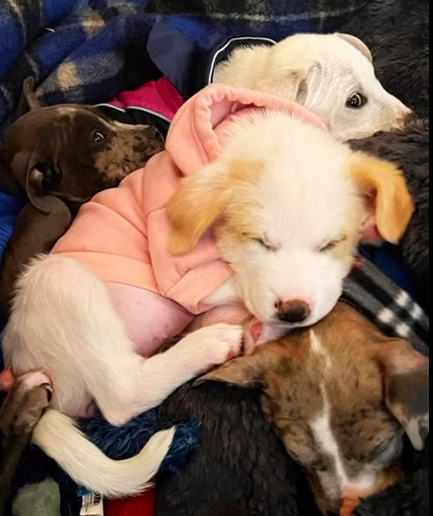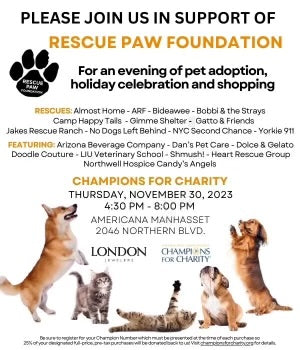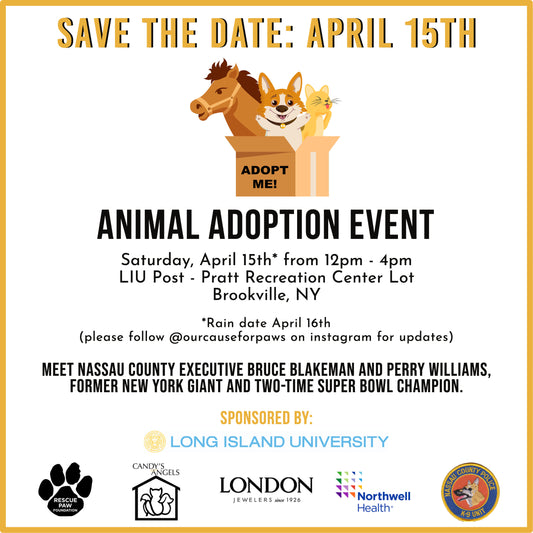Blog

The overpopulation crisis
There are just too many dogs and cats on the streets and in the shelters that can't find homes. With overcrowding in shelters and the fact that many places don't...
The overpopulation crisis
There are just too many dogs and cats on the streets and in the shelters that can't find homes. With overcrowding in shelters and the fact that many places don't...

Rescue Paw 2023 Recap
Rescue Paw Has Accomplished So Many Wonderful Projects Because Of The Generous Support That Has Been Received This Year. 550 Dogs And Some Cats Are Now Off The Streets And...
Rescue Paw 2023 Recap
Rescue Paw Has Accomplished So Many Wonderful Projects Because Of The Generous Support That Has Been Received This Year. 550 Dogs And Some Cats Are Now Off The Streets And...

Why adoption events are so vital to saving lives!
Every year at least twice a year The Rescue Paw Foundation sponsors adoption events featuring many shelters in the tri-state area. Because so many shelters and rescues are full, this...
Why adoption events are so vital to saving lives!
Every year at least twice a year The Rescue Paw Foundation sponsors adoption events featuring many shelters in the tri-state area. Because so many shelters and rescues are full, this...
End homelessness of the animal populations
Humane education is another way to break the vicious chain of how people treat their pets and unwanted pets. Working with programs in the schools in conjunction with Heart educational...
End homelessness of the animal populations
Humane education is another way to break the vicious chain of how people treat their pets and unwanted pets. Working with programs in the schools in conjunction with Heart educational...
Fostering in need
One of the most wonderful ways to help save the precious lives of innocent animals is to foster them into your home. Taking them out of the shelters and off...
Fostering in need
One of the most wonderful ways to help save the precious lives of innocent animals is to foster them into your home. Taking them out of the shelters and off...

Long Island Adoption Event
Rescue Paw not only saves lives from the South, locally and overseas, but we continue to support the whole rescue process from beginning to end. We rescue from some tough...
Long Island Adoption Event
Rescue Paw not only saves lives from the South, locally and overseas, but we continue to support the whole rescue process from beginning to end. We rescue from some tough...
